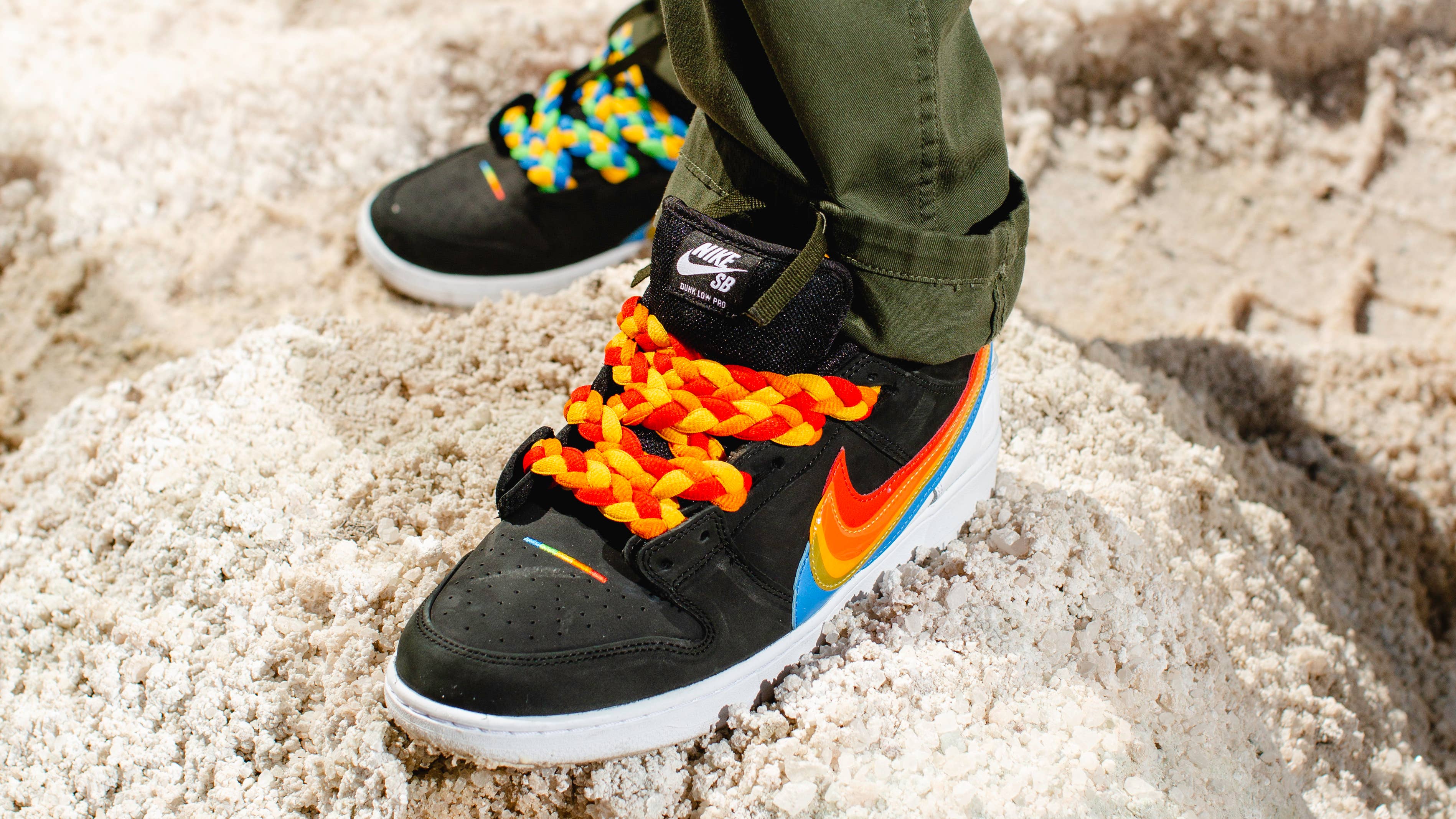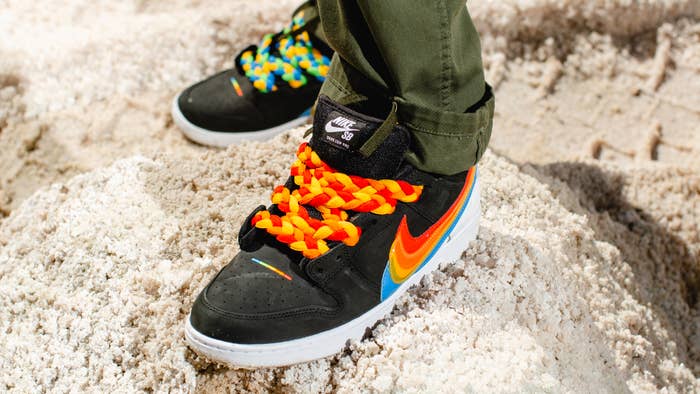
As one of the longest-tenured members of the Nike SB roster, skater Brian Anderson’s worked with SB on clothing capsules and colorways including a camouflage Dunk High and Low, a Dunk High in collaboration with his sponsor Antihero Skateboards, the San Francisco transit-inspired Muni Dunk, the Blazer CS, and his own Project BA pro model. Never hesitant to skate in rare Dunks, he dared to log footage in the coveted Grateful Dead Dunks in 2020, telling The Nine Club in 2020, “It sends a message: ride your shoes.”
Known for his powerful and eclectic personal style, Anderson’s never been shy to allow his skateboarding to communicate individuality, using everything from footwear to fashion to make a statement. In 2017, he became skateboarding’s first high-profile openly gay pro skateboarder, coming out in a documentary for Vice directed by Giovanni Reda. Thrust into LGBTQ icon status following its release, Anderson’s continued to use his platform in skateboarding and with Nike SB to promote positivity and progression. His platform’s growth has led to creative expansion in other mediums such as painting. In 2020 he had first painting exhibition in a show called “Fathers Afloat,” alongside works by his father and grandfather.
The latest SB project he’s connected to is its Dunk Low collaboration with Polaroid, which was released on April 5 through select skate shops, and hits the Nike SNKRS app on April 12 for $120. Anderson, along with photographer and skateboarder Sarah Muerle, was the first to test the Polaroid Dunks, filming a soon-to-be-released edit filmed in Barcelona, Spain.
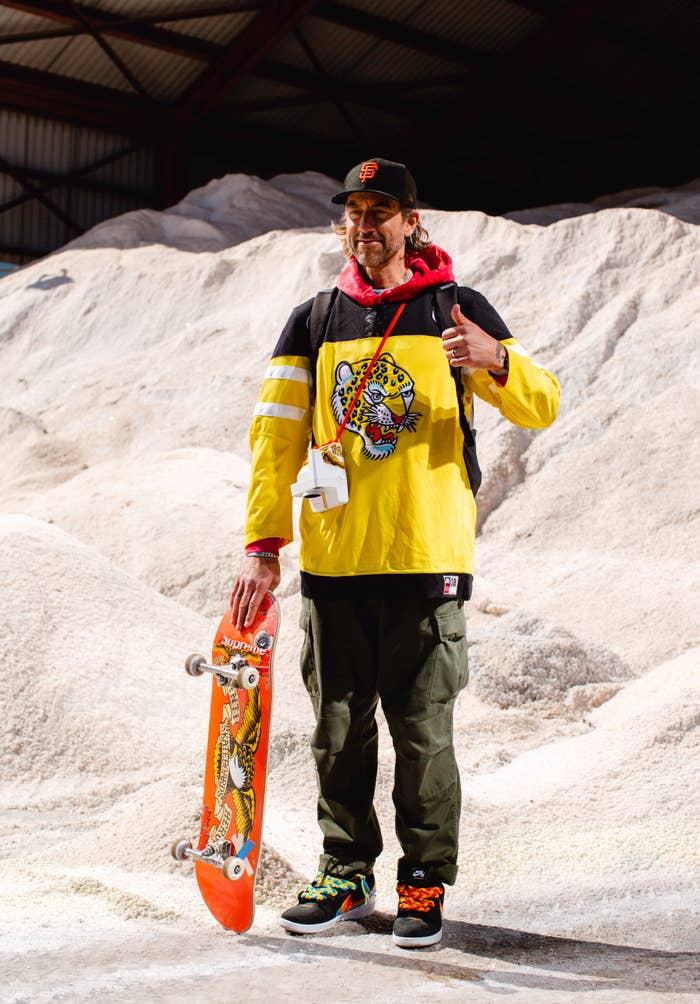
Like the Grateful Dead and Ben & Jerry’s Dunks, the Polaroid Dunk is part of a new SB era where subtle design nods have given way to officially branded collaborations. Most notable on the collaboration is the color spectrum reworking of Nike’s iconic Swoosh, design territory previously off-limits but now fair game, as evidenced by the Gundam and Oski Dunk’s flips on the logo.
In working with SB, Polaroid looked to connect its brand heritage and pioneering work in instant photography with Nike’s iconic product.
“The core idea behind the design is really about light interaction,” Polaroid’s Chief Design Officer, Ignacio Germade says. “We created a shoe that combines light and shadow, black and white, divided by this beautiful spectrum of color created by intersecting three basic colors from the Polaroid spectrum—red, blue, and yellow.”
More than releasing another collaboration, SB used the Polaroid collaboration to explore the idea of showing skateboarding’s creativity, inclusivity, and self-expression through a video and workshops led by Anderson and Muerle in Barcelona and Labor Skate Shop in New York City this past weekend, allowing participants to experiment with the iconic cameras and tell their stories.
We caught up with Anderson to reflect on using his art and design as a progressive platform, and what the changing landscape of sneaker design and apparel means to skateboarding’s future.
How was the recent Polaroid workshop with Labor in New York?
Saturday was cool. I was able to have Paulgar [Paul Roura] come because of his experience being a photographer and a videographer. And we’re really lucky that it was a sunny day. As a host of the event, I wanted to make sure everybody was having the best possible time, so before I even got there, I pictured going to the southeastern corner of the park because it’s just outside of all the obstacles and it’s a little it’s not quite as loud. Paul showed up with a big bag of tripods and equipment and it was great. I braided the different colored laces of the Dunk, not to show off but to just do something fun. I got plenty of sleep—it was a really fun event but I quickly realized the skatepark was going to be too crowded so we meandered down underneath the Manhattan Bridge and went towards the East River.
As you may have seen in some of the images, there’s this massive garage that holds the salt for New York for the winter for the streets, so the mirrored windows on this new building were reflecting off of the salt pile, and it made for some great shadows and light. It was perfect. We walked around and had a beautiful view of all the bridges, even though the skatepark was full.
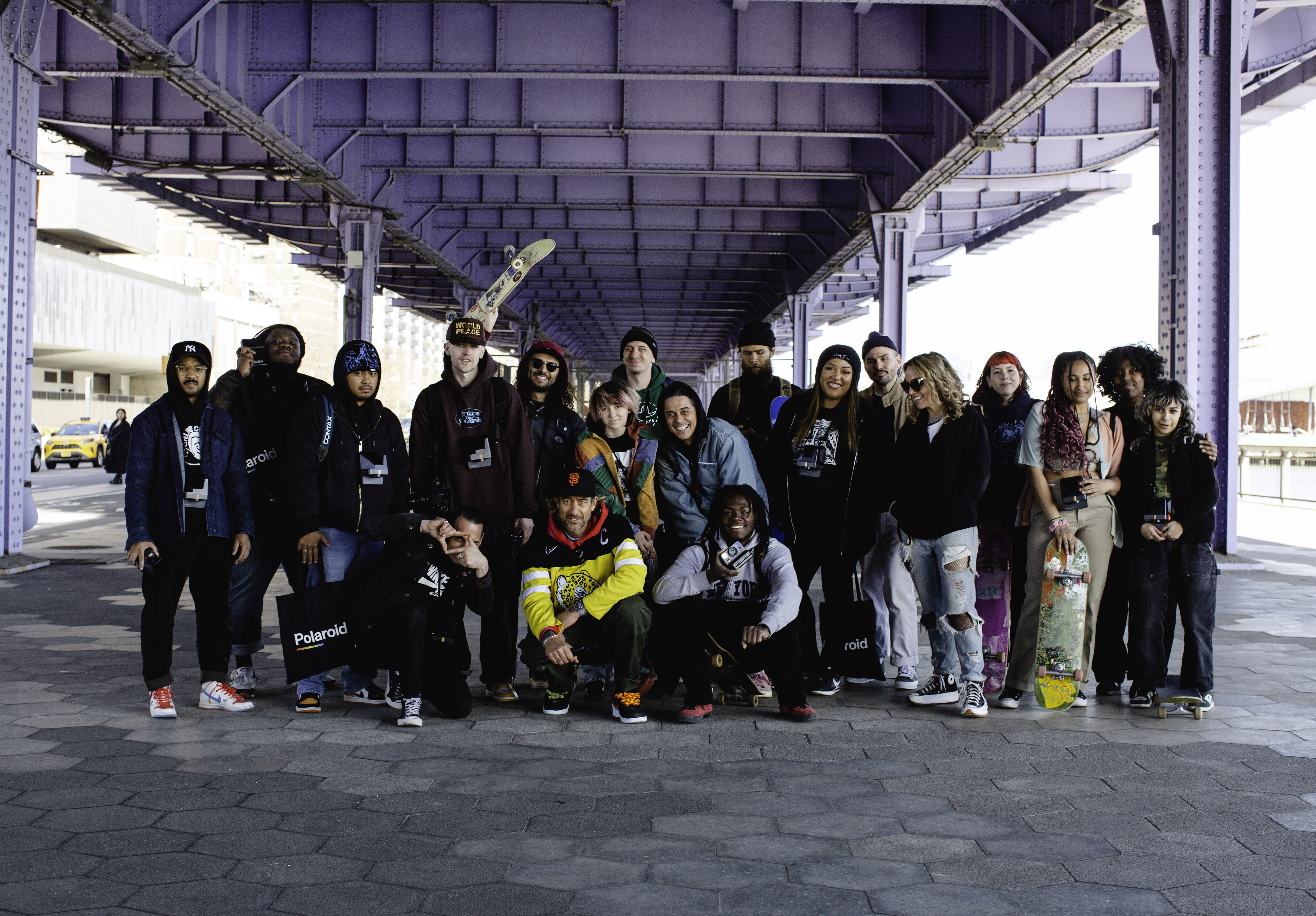
What do you think about the design of the Polaroid Dunk?
Making the one Swoosh a clear yellow gel-like material was brilliant for two reasons: one, sometimes we use a filter or gel over a flash on a camera to give a photograph warmth or tone. So that’s a great nod to that and second, that having yellow laid over a red Swoosh creates a sliver of orange, and with the yellow over the blue it makes green. I said in another interview that it’s Art Class 101. Pretty cool!
It feels like there’s a lot more purpose in using sneaker and apparel design to do storytelling larger than skateboarding. How do this shoe and photography around it tell the LGBTQ+ community’s story and point of view?
I think having the iconic almost rainbow colors reminds people—consciously or subconsciously of the old gay flag, before the new more all-inclusive one. Hopefully, that creates conversation and maybe sparks an interest for people to research the gay flag meaning, who designed it, and what each color stands for which creates more LGBTQ+ awareness.
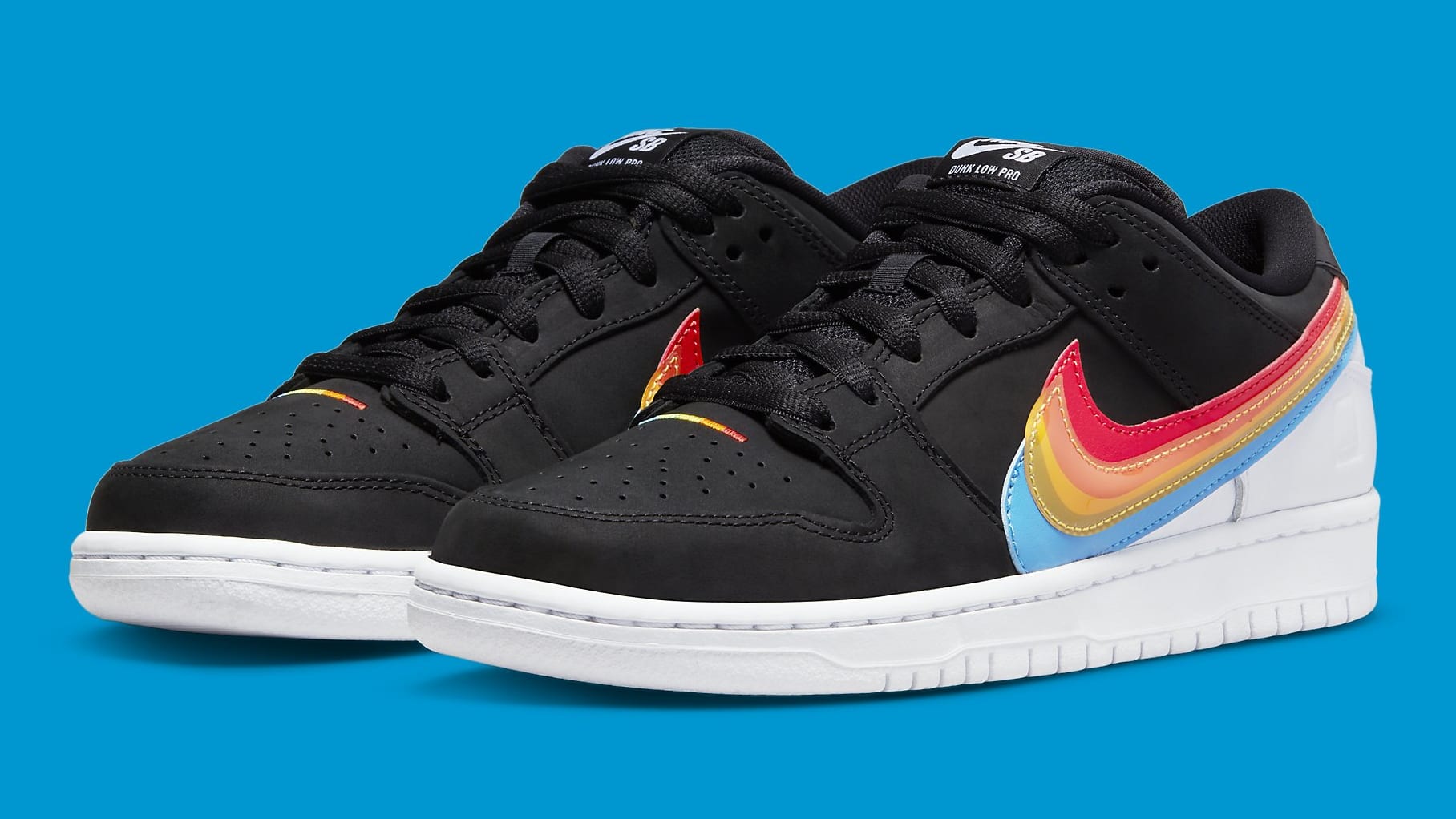
I know you’ve had a long history with visual art, from keeping sketchbooks to coming up with graphics for your company 3d, when did you start to feel comfortable sharing your work?
I’ve never taken the time until two winters ago to sit and really try to teach myself how to paint what I see in my mind on a canvas. And it wasn’t until my siblings shared a lot of my father and grandfather’s sketches and paintings with me that I was really able to sit still for once with my paintings. A friend of mine that works at MoMA, Calder Zwicky, and I did a few workshops with him at MoMA working with LGBTQ teens—we did one workshop where actually we shot Polaroids because he said, “You can do whatever you want.” And so I said, “Why don’t we do Polaroids? And why don’t we have a photocopy machine and tell these young people about zines?”
He came and saw some of my paintings in New Jersey that I had been working on about three years ago and he goes, “Brian, you’re a painter. You have it.” He wasn’t trying to be over-complimentary, he was being truthful and very honest. So I sat there in the winter in 2020 and started to really try and paint. I did a small show with one of my grandfather’s pieces and six of my father’s, but it was during COVID and it was really strange because we had to get everyone’s information for contact tracing.
I’ve never really fully taken time off of my skateboard to go make paintings that I think are great. People have told me not to question myself but I always want to make my work better, because guess what? My job is to be a pro skater and I’ve said yes to every tour, every contest. I never stopped but I always kept a sketchbook. It’s never bothered me for my friends to look at them—if I had something private, I would write in code. I have about 20 or 30 sketchbooks from my years of being a pro skater and that’s what I’m using to slowly piece together to write my book. But yeah, of course, I have those doodles that everybody does—a face with two eyeballs… one ear, one nose. That’s not my best art, you know? I have yet to make stuff that I feel extremely proud of, I’m looking forward to when I have the chance to actually start saying no for once, because I enjoy doing all these things—I enjoy going to events, I enjoy public speaking… it’s definitely not making excuses, I just never fully slowed down long enough to sit with half a dozen paintings for eight hours a day for three months. Some of my peers like Ed Templeton and Mark Gonzales, they’ve taken that time over the years to really sit down and paint. It’s actually a positive thing to say because when I sat with my father’s drawings, and I saw what started happening when my mind slowed down and worked with my actual hand, and then my whole body, I thought, “Wow, I can do this. I can paint pretty OK” I’m still in the process of learning—watching YouTube videos and wanting to take some classes eventually. I really want to help design apparel for Nike SB, I want to help other brands make apparel. I just love apparel.
I wanted to touch on your design work with Nike SB. Through having conversations with other skaters, I realized that the whole industry is set up for me as a cis white male. You walk into a skate shop and everything is designed for you. I think clothing is very political in a sense, so what’s it like being able to make the things you want for non-traditional skaters and people?
Growing up as a teenager in the ‘90s my friends and I would go dumpster diving at the Salvation Army, not to do any vandalism, but we’d grab some flannels and things like that. Then Nirvana came along, so I started wearing Reeboks, jeans, and a white T-Shirt because I was like, “Damn it! Everybody’s wearing our look.” But yeah, as a kid, being into the Stray Cats and hair metal and all these other kinds of music all at the same time, plus not having a lot of money, we were little drifters and being into skateboarding. Everyone was cutting the tongues of their shoes open on to stuff in some more stuffing to modify the look, we’re very persnickety about how we laced our shoes and everything. I was over six feet tall since I was 13 or 14, so I had an easy time finding Dickies and flannels around the house from my father, but I always had this desire to alter my clothes to make them my own and my hair for that matter. My father had a very simple classic style, you know—tan slacks and L.L. Bean flannels. My sister died by suicide but before she died, she made her own prom dress. She had sketchbooks filled with drawings of jewelry. I feel like she didn’t get to do what she was maybe going to do had she stayed here on this planet. I have a lot of that same mojo.
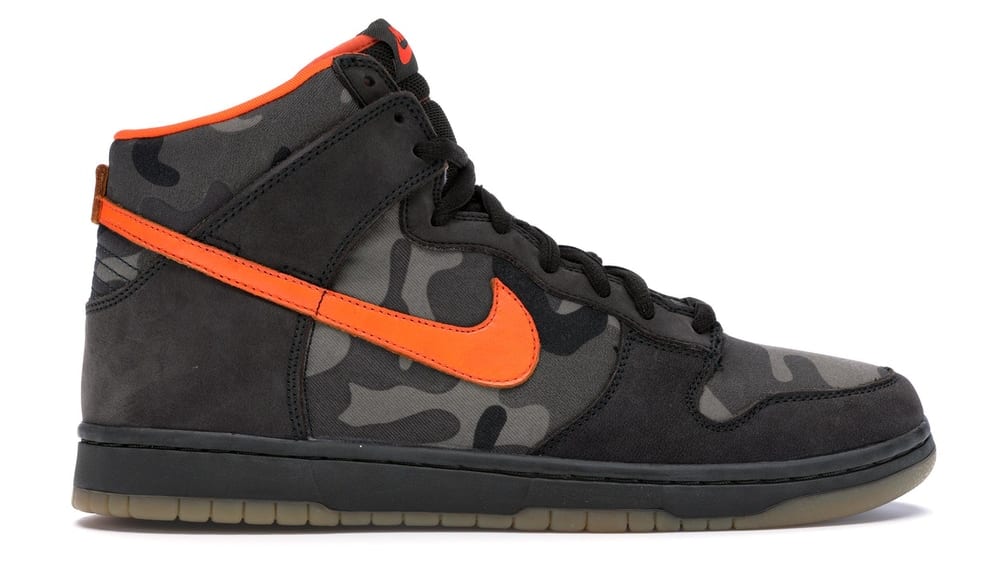
I’m very good at redrawing letters, sort of like drafting—I can look at a lot of things and kind of come pretty close to it. I joke that I’m a glorified sign painter. My friends and I from the very beginning were cutting the bottoms of our jeans. It’s funny, we just did it. We weren’t even trying to look like the people in skate videos, we were already doing that. One of my sisters pointed out to me that I’m so interested in fashion, but it can be so shallow. It’s extremely wasteful to put on a fashion show—this enormous production with lighting and God, don’t even get me started with plastic. It lasts like 18 minutes. You know what I mean? I think people are becoming more aware of the waste that a fashion show creates. My sister said to me that it’s important to express yourself. Not that you want to be the flashiest—you want to be comfortable. There’s an importance to that. Now some people can’t afford that but I think people are finding—with the help of the interweb—that they can find things that are affordable that make them feel comfortable. I want to continue to contribute to brands, and help with design because guess what? It helps people feel comfortable when they leave their house and that’s important. It doesn’t mean you have to look fabulous, it could be a certain pair of trousers that sits right on your foot and you look down and because you’re happy when you’re looking down, you’re able to look up again.
Do you have a favorite piece or shoe that you’ve been able to design?
I have something I actually should try and trademark right now. I just made this—I took a pullover hoodie and I cut it down in the middle, then I got large plastic buttons and I don’t have a sewing machine, so what I do is I go to a dry cleaner, where I live in Queens, and I just walked in and asked him and said, “Will you sew things on shirts for me? Seven bucks? Right on!” I take safety pins and pin things on shirts where I think they should live. I’ve never had the time to sit with a sewing machine because I’m a mover. My dad had a workbench in our basement and I inherited this love of woodworking and all things handy, you know. But it’s really hard for me to sit still—movie theaters are really tough for me. My alcoholism kicked in pretty hard in my adult life. I need to go if I’m not sleeping, I want to be writing. Drawing. Wiggling. I empty my pockets, and there are napkins with a million ideas. When I tried to make 3d skateboards it was difficult because the skateboard market was saturated with all these little cafe, art companies. We were losing money so I had to stop. I just took a step back and decided to organize my ideas to present to Nike or Supreme down the road. I’m happy to have done all I have in skating and as I approach 50 years old, I want to organize all these things and see where I land. I’m turning 46 in June and one of the reasons I also stopped drinking alcohol and smoking cigarettes is because I want to take care of this frame.
What about some of your favorite SBs or Dunks?
My top-five fave Dunks I can think of are, the Familia Skate Shop’s First Avenue Prince mash-up, the Humidity Skate Shop gold Dunk High with purple velvet interior which—if I’m not mistaken—is meant to resemble the inside of a horn/trumpet case. That was so cool. I’m glad I have a pair. Another would be the Oski white Dunk High with shark Swoosh. I have to say the one I did, of course, the camouflage and orange Dunk High with long underwear inside the flap on the high top, and the last one would be the Grateful Dead with stash pocket in the tongues—how risqué.
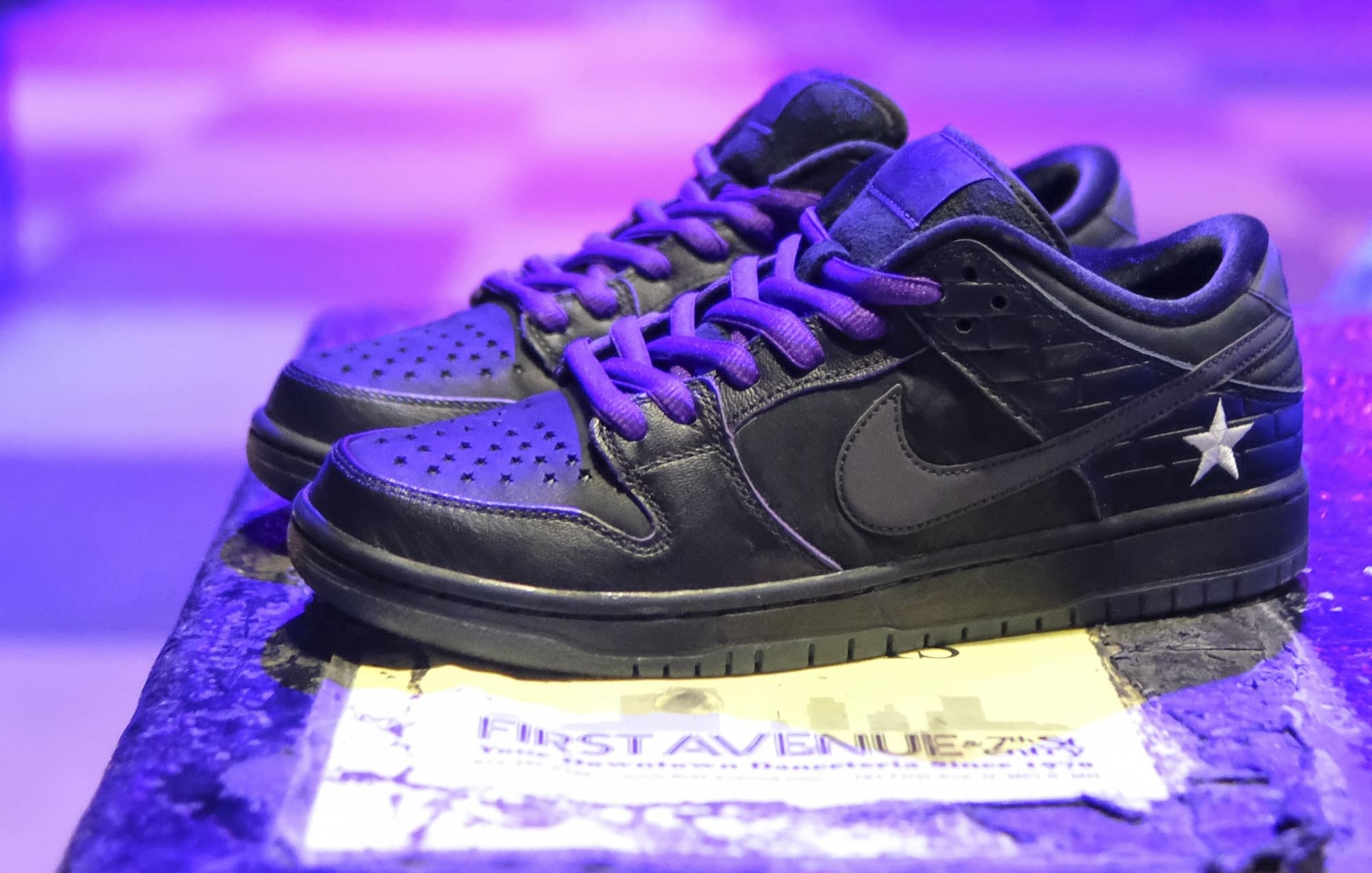
I was thinking about the Vice documentary you made with Giovanni Reda and if I’m not mistaken, it’s about five years old now––so much has changed in skateboarding. What’s it been like since that was released?
In the beginning, five people a day would come up to me in New York and want to talk about it and it would really drain my emotional battery. There were some very heavy stories people shared right to my face and I am not ashamed to cry, but I’m holding myself together because they’re telling you this very personal story. I’m sure other people see how it has changed when they’re at the skate park, but as you go away from… I hate to say Middle America but the major cities, it’s still changing.
I see a lot of change because they wouldn’t be coming up to me had I not said that. They’re telling me that they wouldn’t be living the way that they’re living if that piece didn’t come out, so that’s the direct change but I’m not a young teen at a skate park who may still be getting heckled. But it makes me feel proud that there was definitely a lot of change from that. What I do want to say is that I don’t feel like the piece is necessarily dated but there are some things in there that I wanted to be in there that people aren’t happy about—Jake Phelps saying “your sexual crisis or something.” I talked to one of my sisters about this. I don’t want to label a cis male a bonehead in the locker room, but I feel that we had to speak in a certain way so those possibly homophobic folks would have their minds change. “Because hardcore Jake said it, it was OK.”
I didn’t even know Reda was going to interview all those people and honestly, that took a lot of pressure off me. I watched that thing about 70 times out in Fire Island with no service while my husband was snoring, looking for every single mistake. I thought it was important for those possibly homophobic, uneducated people to hear it in their own language. Now that the world has opened up more, it’s different, so I’m sorry to those that may go back and watch it and there are words that don’t make them comfortable but we had to do something to break it in. That’s how I looked at it.
Going back to what you said in the beginning, it’s really interesting to me that you were getting such personal and moving feedback because you had been pro for so long at that point and I—correct me if I’m wrong—I don’t think people come up to you at a demo in the same way and say, “BA, that back smith you did saved my life, man.”
[Laughs.] That’s cool. You made me laugh. It’s so true. I just talked to [Ed] Templeton yesterday because he’s making a new book and I said to him, “You know, add all those things that happened to me—winning Skater of the Year, winning the world championship, back to back.” I equated it to my sexuality being locked in a black box, like an airplane. I lived that whole time. It was glorious. I was celebrated. Throw me up on your shoulders and spray me with champagne, but everything is staying in that black box because I thought it was never an option to let it out. It’s never going to be opened, it’s somewhere down in my shin or my ankle where nobody was gonna find it… completely welded shut. Never. Not in a million years ever, because I’m gonna get made fun of. Years went by and the world changed around me. I said, “Screw this, you know, not living like this anymore.”
You mentioned you’re working on a book, what else do you have coming up?
I’m just trying to film the best skateboarding I can between now and June 1 for a new Antihero video. And then I’m determined to get to one year of no alcohol, no cigarettes. I’m calling that my rebirth day. I had to knock those things out of my body. May 23 will be a year—knock on wood to be humble, but I think I got this.

